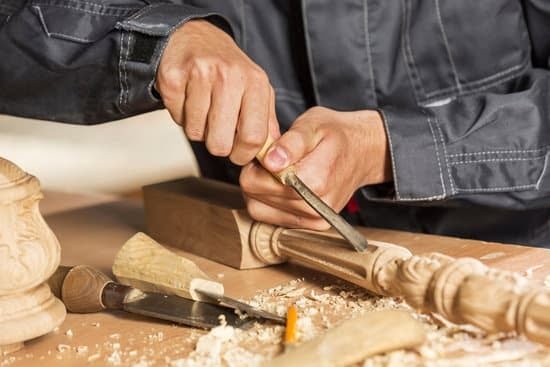Introduction to Woodworking Sanding
Woodworking sanding is the process of reducing the roughness of wood surfaces through various processes to prepare them for finishing. This process can involve different materials, such as paper or steel wool, and specific tools to refine the grain and remove imperfections. Various types of sanding are available depending on the project, such as hand sanding, machine sanding, electric-powered orbital sanders and belt sanders. The main benefits of woodworking sanding is that it prevents the finished product from looking amateurish by providing a smooth finish that enhances its overall look and functionality.
Before starting any type of woodworking sanding project, it’s important to select the appropriate materials and tools for the job at hand. Each type of material has its own set of characteristics which can affect the final outcome; therefore, it is important to take into consideration size, grit rating, cost and durability. Additionally, the tool selection should match with the chosen materials in order for efficient results without risking damage to the material or workpiece.
Once the proper supplies have been acquired, it is recommended to begin any project with a coarse or medium-grit paper followed by a finer grade when needed. Following this sequence will help provide better results while avoiding unnecessary steps due to excess removal during coarser grades. After each grade has been applied consecutively until fine-grit finishes are reached, an optional step includes lightly buffing with steel wool to remove any remaining dust particles left behind after having completed all pieces successfully. Finally applying wax or finish will seal all areas of work with a smooth and radiant shine that adds value to any project canvas!
Basic Steps of Woodworking Sanding
1. Start off with a coarse grit of sandpaper: A coarse grain of sandpaper is best to start with, usually 80 or 100 grit. It will remove any large imperfections and flatten the surface before you move onto the finer stages of sanding.
2. Sand in the direction of the wood grain: The most important rule of sanding is to go in the direction of the wood grain, not against it. Going with the grain helps avoid any potential splintering or scratching that may occur from going against it.
3. Work your way to finer and finer grits: After you’re done with the coarser grits, begin incorporating progressively fines grains such as 120, 180 and 220 grit abrasives into your sanding process. This progression allows for greater control over just how smooth you’d like the surface to be in terms of its shine or lack thereof.
4. Finish it off with a fine-grit abrasive and/or steel wool: Once you have achieved your desired outcome, finish up by buffing out the remaining scratches left behind with an extra-fine-grit abrasive and/or steel wool ” this will help achieve a refined look while still maintaining some texture to show off the natural beauty of your project’s wood grains beneath all that hard work! Be sure to run your fingers along its texture afterwards – they won’t be disappointed!
Finishing Techniques
Staining
Staining is an important step in finishing sanded woods. Before staining, make sure the wood has been sanded properly with the appropriate grade of sandpaper for your project. After it has been sanded, factor in the absorbency and open pores of your chosen wood and choose a stain best suited for that type of wood. Generally, the higher gloss you want for the finished product, the denser and thicker your coating should be when staining. Apply several thin coats of your chosen stains evenly to avoid heavy build-up and allow drying time between each step.
Sealing
When sealing, add a protective layer over top of stained woods to increase durability and longevity against wear & tear. Clear sealers add minimal colored tints while maintaining natural colors while they form water-resistant surfaces, making them great preservative finishes. Before applying sealant to your project piece(s), use a tack cloth to remove all particles such sawdust or other small particles which could remain on the surface after brushing your applied sealer. Depending upon your desired result either wipe on or brush on multiple thin layers of sealant. For more shine you can additionally polish each coat with a soft cloth if desired once dried before continuing onto the next layer.
Varishing
Varnish is typically used when you are looking for a glossy finish such as with furniture pieces or floors since it forms durable finishes suitable for high traffic areas as well as liquids and exposure from varying temperatures or weather elements due to its thick sturdy layer over other finishes . First, make sure all previous steps have been undertaken completely prior to applying varnish including sands, stainings and sealing processes (depending upon which steps you require). Make sure you buy varnish that that is indicated suitable for interior/exterior usage -specifically relates to what finish purpose you need it for (i.e. exterior varsinh will resist weather wear better than interior).. Finally apply multiple thin coats using brushes slowly in a back-and-froth motion in order not to leave imperfections in finished product then allow ample amount of time between each coat before polishing lightly if desired with a clean rag while still slightly wet..
Health & Safety Considerations
Woodworking sanding is a necessary part of the process when creating and building furniture. While this work can provide us with great satisfaction, it is also important to protect ourselves from potential dangers associated with it.
When sanding wood, particles of the wood may become airborne; particularly if the surface is not completely smooth before beginning sanding. These particles can contain toxins, dust, fungi and bacteria that could potentially harm our health if inhaled or ingested in any way. It is therefore critical to wear proper protective gear such as goggles and a face mask to prevent inhalation of these particles. If possible it may also be helpful to obtain some form of ventilation for the area you are working in either by way of an exhaust fan or opened windows to ensure proper air flow. Additionally, take frequent breaks available throughout your project to make sure your airways remain unobstructed
In addition to health safety considerations during sanding it is ever important that any power tools used are treated with caution so as not to put yourself or others at risk from injury due to its accidental operation. Carefully read through all instructions on any tools label and follow them accordingly as well as clearly marking off any off-limit areas when using these tools to avoid unexpected mishaps.
Common Problems during Sanding
Splintering: Splintering is one of the most common issues during woodworking sanding. This can occur due to incorrect grain direction, a dull or incorrectly used sandpaper, or can be caused by an blunt edge. In order to diagnose and solve this issue, you need to first figure out if it’s being caused by incorrect grain direction or sandpaper. Check the grain direction of your wood and ensure you are using the correct grade for the sandpaper that is suited for your project – finer grits for finished projects, coarser grits for harsher surfaces. If you are having trouble with an existing blunt edge on your workpiece, try using some medium-grade abrasive cloth wrapped around a file to remove any splinters ” just make sure to apply minimal pressure.
Uneven Sanding: Uneven sanding also occurs often in woodworking and can be caused by several issues such as insufficient visualization of the surface area when sanding, not allowing sufficient time between gradations, inadequate use of block plane or manual force during levelling etc. It is important to take breaks in between each round of sanding so that progress can be properly assessed and problematic spots addressed manually before too much additional material is removed. Additionally, stroking techniques should be adjusted periodically so as not to leave more material in certain spots than average ” use criss-cross strokes instead of circles when possible – and attempt to visualize exactly how much work is left on each zone on your workpiece prior to continuing further with higher rubs.
Imperfections & Sanding Errors
Woodworking sanding is a vital part of the process of creating a beautiful, professional-looking wood craft project. Sanding allows for control over the finish and can help to create smooth or unique textures. However, sanding can also mask mistakes or create new ones, so it is important to take steps to ensure that you avoid any errors or imperfections. The following are tips for dealing with grain irregularities, surface blemishes, and other potential errors when woodworking sanding.
When dealing with grain irregularities, it’s important to be sure that you are using a fine-grit sandpaper that encourages the wood fibers in the same direction as the grain. Doing this will allow you to sand out any small imperfections while still keeping the look of your finished product intact. It’s also helpful to use a random orbital sander and vary the speed according to how much pressure you are exerting on it”slower during heavy sanding sessions and faster when finishing up with finer grit papers.
When it comes to removing surface blemishes caused by tool marks or scratches, you will want to begin your work by carefully scraping away any large chunks with a nail file. This will help provide access to smaller areas where smoothing should be done lightly by hand-sanding with an extra-fine grit paper such as 1000 grit in order not to cause further damage. Again, keep the direction consistent with the grain of the wood for best results.
Lastly, sanding often causes splintering along edges or at corners due excess build up within thin crevices or narrow spaces; this is particularly common when using square scrapers or sharp chisels since these tools can concentrate shaved wood particles at fragile points around joints where two pieces meet making them prone to damage from aggressive abrasives like coarse 120-grit abrasive pads which should be avoided . The fix here is simple: Always soften edges manually before doing major shaping work either by hand-sanding lightly (using 400″600 grit paper) starting in the middle of the corner and working outward towards adjacent flat surfaces; this processhould make visible splinters disappear in no time!
Conclusion
Woodworking sanding is an important step in the woodworking process, always allowing for a seamless finish and high-quality outcome. Sanding ensures that the materials used appear smooth to the touch and eliminates any imperfections or slight irregularities. Additionally, it can prepare materials for a protective coating such as paint, finishes, or varnish.
Sanding offers myriad benefits. It removes excess material such as glue, paint, or splinters; smooths out finish lines; and helps decrease minor voids in the surface of the wood. Sanding is also key in providing a quality finish; it evens out surfaces and provides more comfortable surfaces while keeping them clean and dust free.
The full process of sanding includes three main steps – prep sanding to remove existing protection or dirt; fine sanding to flatten irregularities and give final smoothness; and lastly final surface prep (which may be done either by hand sand paper or with an orbital sander). Safety equipment should always be worn ” eye protection, gloves, masks etc ” when working with power tools for woodworking tasks such as sanding.
Overall, woodworking sanding is a great way to complete your next project at home! After following the correct safety precautions outlined above along with these simple steps your project will look cleaner and nicer than ever before! Take on this task yourself now – you’ll love how easy it can be!

Hi everyone! I’m a woodworker and blogger, and this is my woodworking blog. In my blog, I share tips and tricks for woodworkers of all skill levels, as well as project ideas that you can try yourself.





